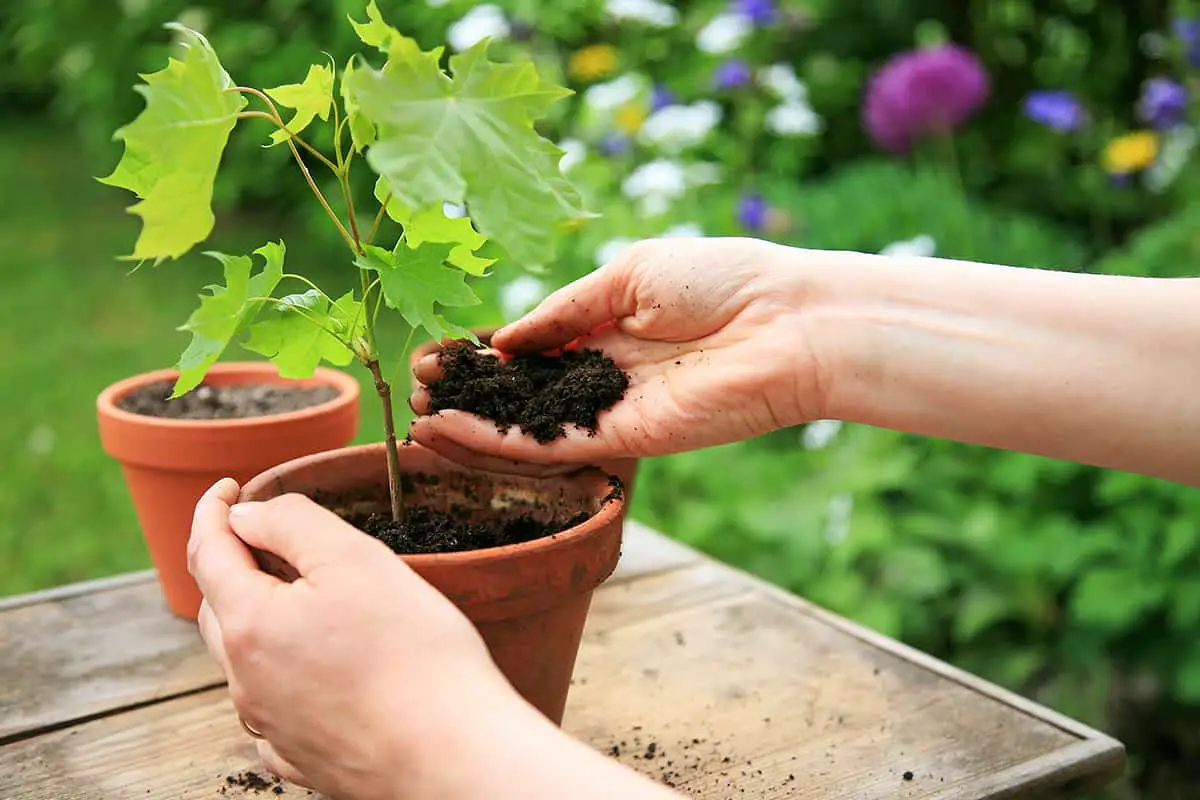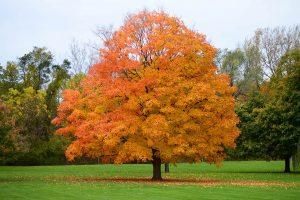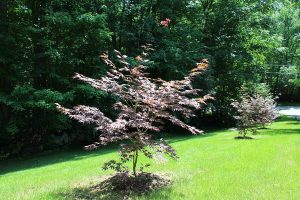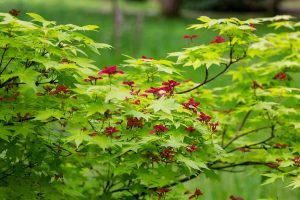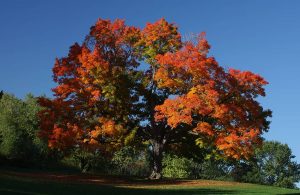Caring for a maple tree is pretty easy, and in fact, these are very low-maintenance plants for much of the year. If you want to give your maple tree a boost, then you can add fertilizer to improve the nutrient content of the soil. Here we look at how to feed maple trees and which are the best fertilizers to use.
Table of Contents
Do Maple Trees Need Fertilizer?
Maple trees are not heavily reliant on fertilizer to grow well, but it can help in certain cases. Young maple trees, in particular, can benefit from annual applications of fertilizer because this will help them to develop a strong root system, which will give them a good base upon which they can build as they get older.
For well-established maple trees, fertilizer isn’t usually recommended unless the tree is showing signs of slowed growth or other issues which can be related to a lack of nutrients. Typically, mature maple trees will have root systems that have spread far and wide, and these roots are, therefore, able to seek out new sources of nutrients in the surrounding soil, as well as from rainwater.
Fertilizing a healthy, thriving, mature maple tree can actually cause more harm than good because it can alter the balance of nutrients they have become accustomed to and damage the root system. However, if your maple tree is showing signs that it is struggling, then fertilizer can give it the boost it needs to get back on track. Signs that your maple tree may benefit from fertilizer include dropping leaves before fall, dull foliage coloring, slow growth of new branches and leaves, and leaves that are smaller than usual.
All of these issues are commonly associated with a lack of nitrogen in the soil, which is the most important nutrient for maple trees. If these issues occur with your maple tree, you can fertilize it to help it regain its strength and return to a more healthy state.
Mulch as a Maple Fertilizer
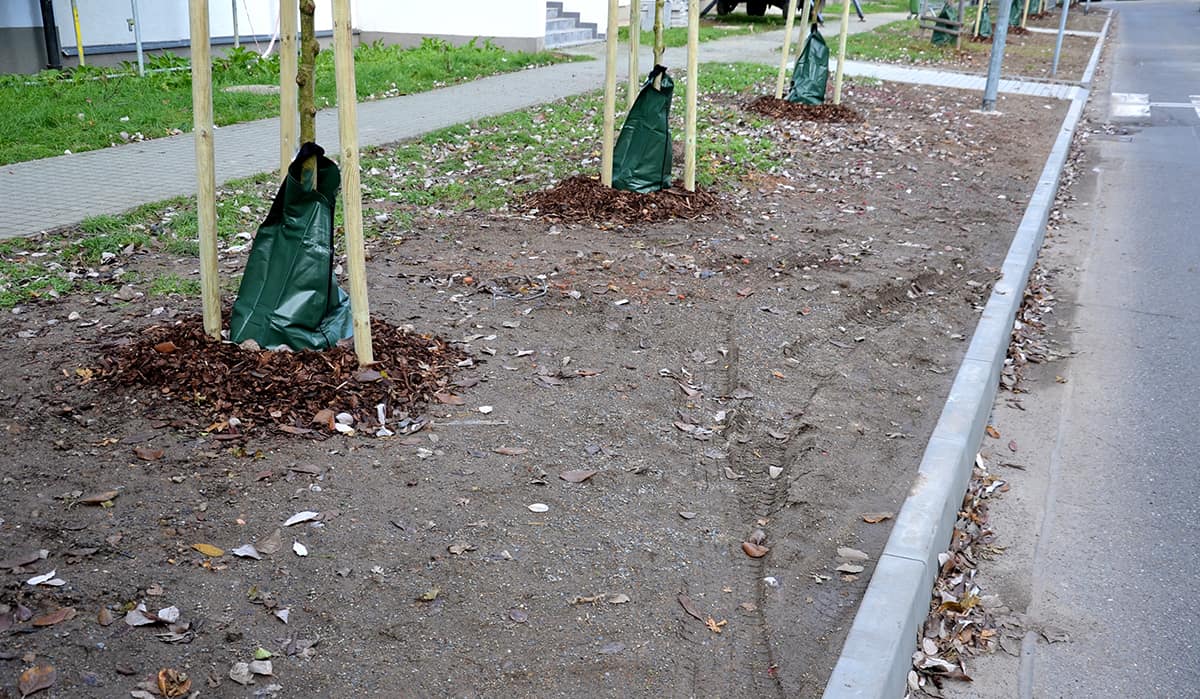
If your maple tree is in good health and isn’t showing signs of needing fertilizer, then using mulch or compost over the soil is a good way to improve soil quality over a longer time span. Mulching the soil will help to retain moisture over the summer months and provide insulation in the colder months, and as water drains through the mulch and into the layers of the soil, it will carry small amounts of nutrients to improve soil fertility.
If you aren’t sure about fertilizing your maple tree, then using compost or mulch is a good compromise, as it won’t dramatically amend your soil, but it will help to replace any depleted nutrients in the soil.
When to Fertilize Maple Trees
Maple trees can be fertilized once or twice a year, depending on the condition and age of your tree, as well as the condition of the soil it is growing in. The best time to fertilize with a slow-release fertilizer is in the fall, after all of the leaves have dropped from the tree. The fertilizer will slowly be absorbed by the roots and stored in the form of energy, ready to be utilized when spring comes around, and the tree can send out lots of lush new growth.
You can also fertilize maple trees in spring, just after they have started to show signs of new growth. This can help promote more above-ground growth for a fuller-looking maple tree, and it will also help to ensure the foliage of the tree remains bright and vibrant.
Where to Fertilize Maple Trees
When applying fertilizer to the ground around your maple tree, you should leave a gap of one foot around the trunk of the tree. If fertilizer comes into contact with the trunk of the tree, it can cause significant damage.
Apply the fertilizer to the soil as described in the manufacturer’s instructions, covering all the way to the drip line of the tree and slightly beyond. The roots of a maple tree can reach several feet beneath the surface of the soil, however, the feeder roots tend to remain within the top 12 inches of the soil.
Applying fertilizer to the surface of the soil will work fine for maple trees, because the water will carry the nutrients from the fertilizer down into the shallow depths of the soil where it will be absorbed by the feeder roots. If you have particularly compacted soil where you get a lot of water runoff, then it can be helpful to create holes in the soil of around 4 to 6 inches deep where you can add the fertilizer to help it permeate the soil.
You can also purchase fertilizer spikes which can be inserted into the ground and deliver the nutrients deeper into the soil, and these are especially useful for cases where the soil is compacted.
Best Fertilizer for Maple Trees
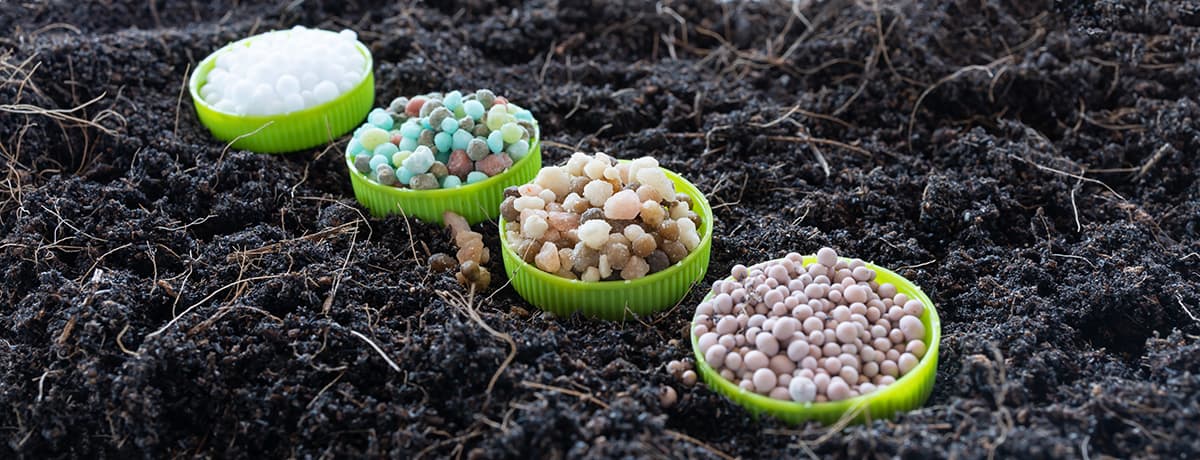
The most important nutrient for healthy maple trees is nitrogen, but this should not be the only nutrient you feed your trees. When buying fertilizer, the packaging will display a ratio of N-P-K. This refers to the amount of nitrogen, phosphorus, and potassium in the fertilizer. The ‘N’ corresponds to nitrogen, ‘P’ to phosphorus, and ‘K’ to potassium.
For maple trees, you should look for an NPK ratio that is higher in nitrogen than anything else. A good balance would be 10-4-8 or 12-4-6. Nitrogen is responsible for root production, as well as lush foliage growth. Since maple trees are grown primarily for their greenery, nitrogen is an essential nutrient for achieving dense and flourishing foliage.
Specific Maple Fertilizer
There are a number of fertilizers out there which have been specifically formulated to meet the needs of maple trees, such as the Japanese Maple Fertilizer by Happy Frog. These species-specific fertilizers are great if you’re new to caring for plants and want to get the fertilizer mix just right, however, they are typically more expensive to buy than generic fertilizers, which could do an equally good job with your maple trees.
Nitrogen Heavy Fertilizer
Any all-purpose fertilizer or tree fertilizer which is higher in nitrogen than any other nutrient is going to be suitable for feeding a maple tree. The Tree and Shrub Food by Fertilome is a good choice, with an N-P-K of 19-8-10. Fertilizer spikes such as the Tree and Shrub Plant Food Spikes by Miracle-Gro are another good option, especially if you find that application of fertilizer is problematic for you. Spikes can be inserted into the ground and will gradually release fertilizer into the soil to be absorbed by the roots, rather than having to be sprinkled on top or worked into the layers of the soil.
Slow Release Fertilizer
Slow-release fertilizer is best for maple trees because they allow nutrients to be absorbed gradually, which will reduce the chance of fertilizer burn becoming a problem with the roots. Slow-release fertilizers more closely mimic the way nutrients are sought out by roots in the soil naturally, which will give better long-term results for your maple tree. Slow-release fertilizer can be bought in a range of application types, including granular, liquid, and spike forms.
